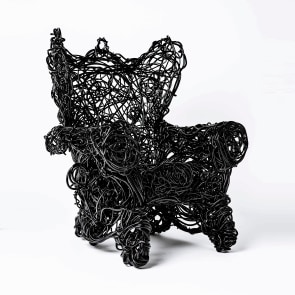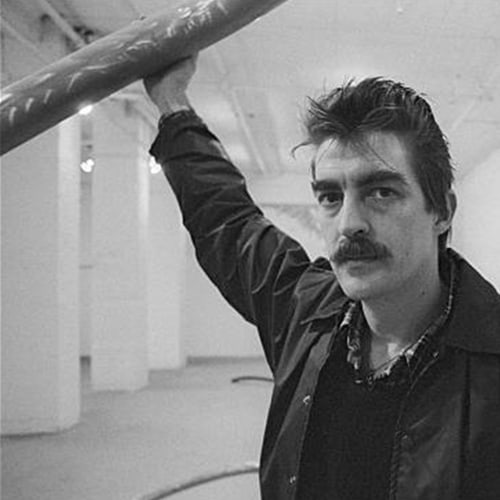

FORREST MYERS (b. 1941)
Forrest Myers' works hold their own space and, aside from their obvious conceptual inventiveness, have an inherent integrity of form and clarity of statement. The result is not "art that is about something", but "art that is something". A dichotomous combination of rigidity and looseness pervades his work – from the sensuality of their continuous lines to the folded dimensionality he creates from a single sheet of metal.
A master metalworker whose attention to detail is readily apparent, Myers achieves an incredible depth of color in his surface paintings by manipulating the inherent properties (iron and copper oxides, cobalt, etc.) of the metal itself. In 1958 Myers began his studies at the San Francisco Art Institute and was greatly influenced by the work of Alexander Calder and Jackson Pollock. A musician himself, Myers found inspiration in jazz, especially the work of Ornette Colman. The two were friends and collaborators, Colman scored one of Myers experimental films and would play at the Park Place Gallery.
Myers moved to New York in 1961 at a time when new concepts in sculpture were rapidly outgrowing the traditional gallery. The solution was what became the most groundbreaking artists' cooperative of its time: the Park Place Gallery. Robert Grosvenor, Mark de Suvero, Tamara Melcher, Ed Ruda, Leo Valadar, Tony Magan, David Novros, Peter Forakis and Myeres formed core group of artists. After the Park Place Gallery closed, Myers showed at the newly formed Paula Cooper Gallery. Myers also became a member of E.A.T. – Experiments in Art and Technology. Myers and three other E.A.T. artists were commissioned to design the Pepsi Cola Pavilion at Expo '70 in Osaka, Japan.
In 1964, Myers created his first sculpture which transgressed the boundary between aesthetics and utility – a simple stool 'Tendu' reconstructed to lean elegantly to one side. Myers returned to furniture in 1980 with an aluminum armchair 'Cut Out' and 'Fold Chairs', which were originally designed in 1971. The 'Fold Chair' led to his first one-man show at the Art et Industrie Gallery in 1981. His early influences – jazz and Calder's wire sculptures - can be seen in later works made of densely woven anodized wire. In an interview, Myers commented on these pieces: "I made wire sculpture thirty years ago […] But using this medium to support human figures, as sculpture that people can sit on, has only been happening recently. You may think about something for ten years, and then suddenly you find yourself doing it without thinking. Being able to draw so rapidly and then coloring and treating it in so many different ways is such an open thing for me, it's like free jazz."